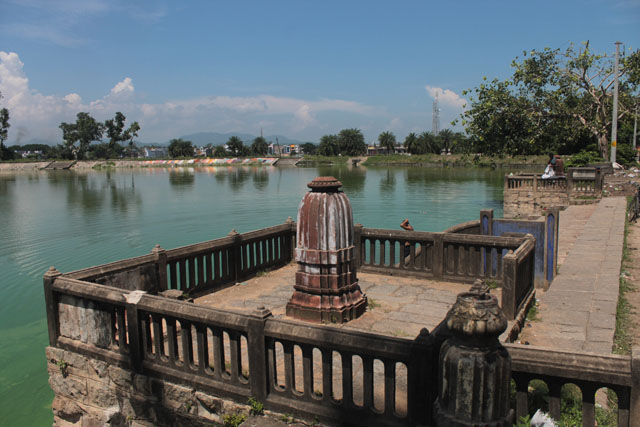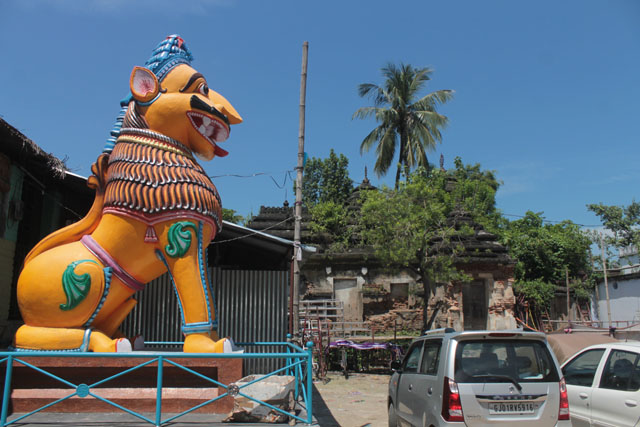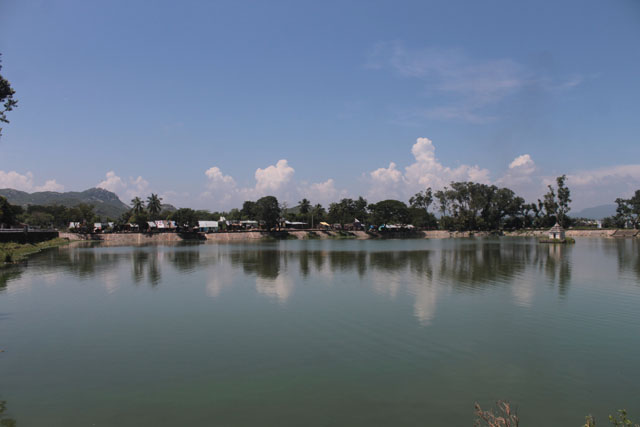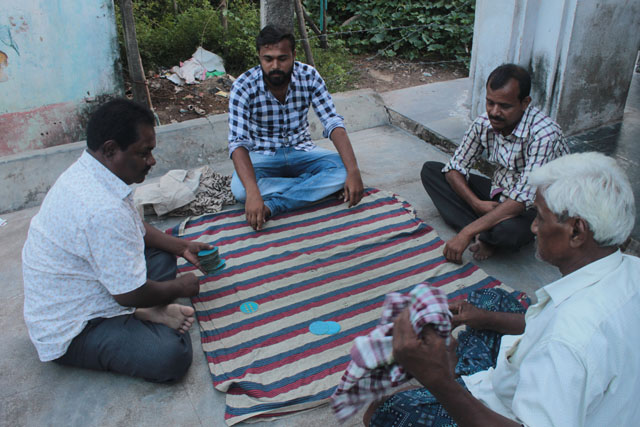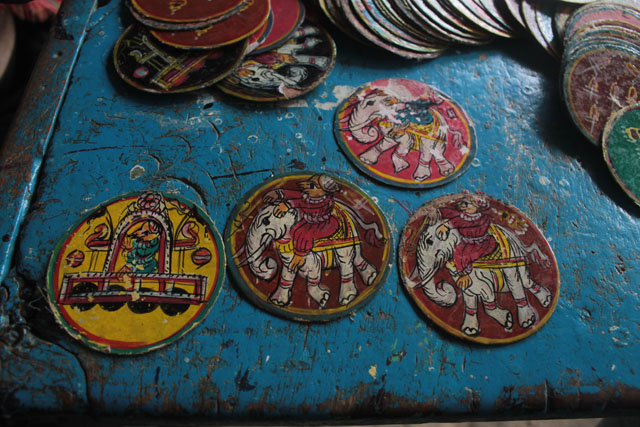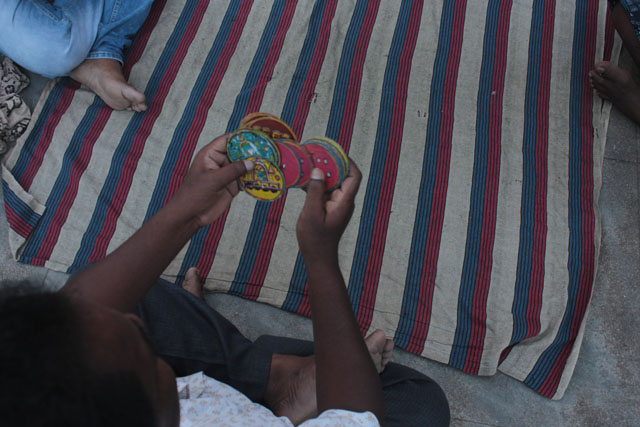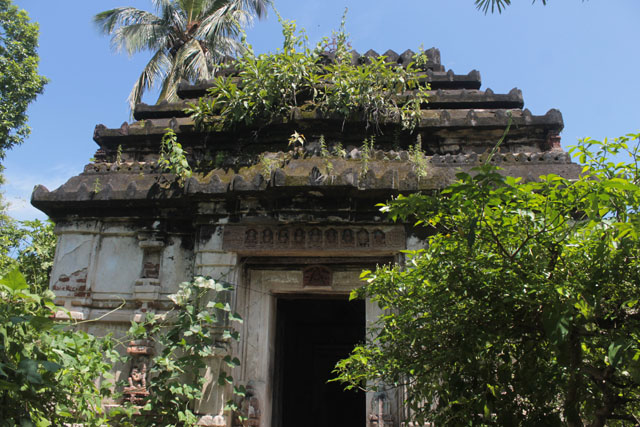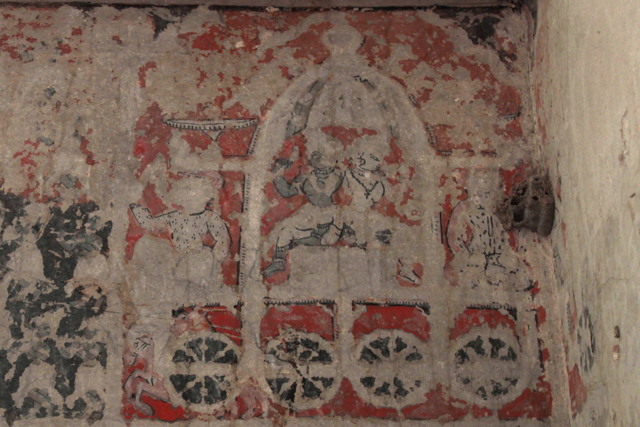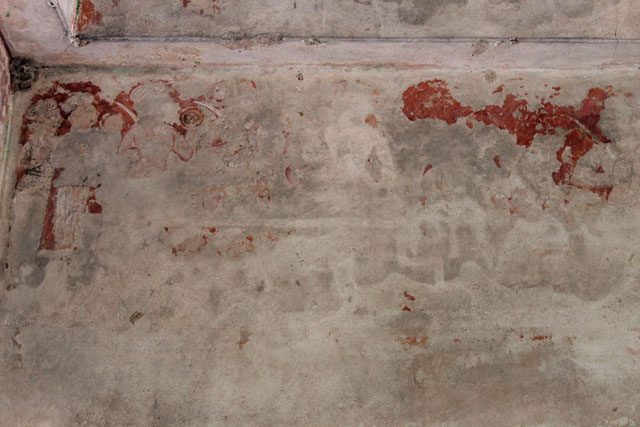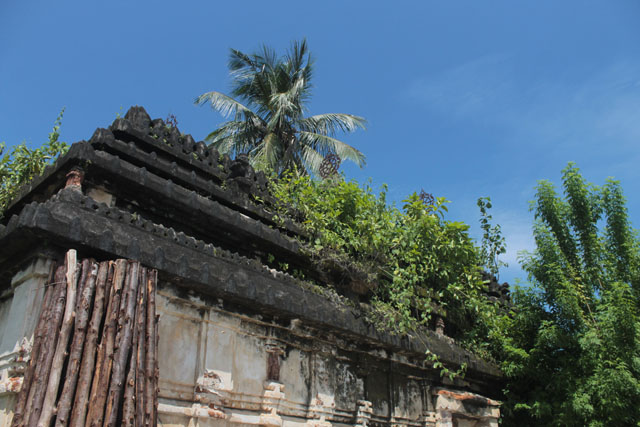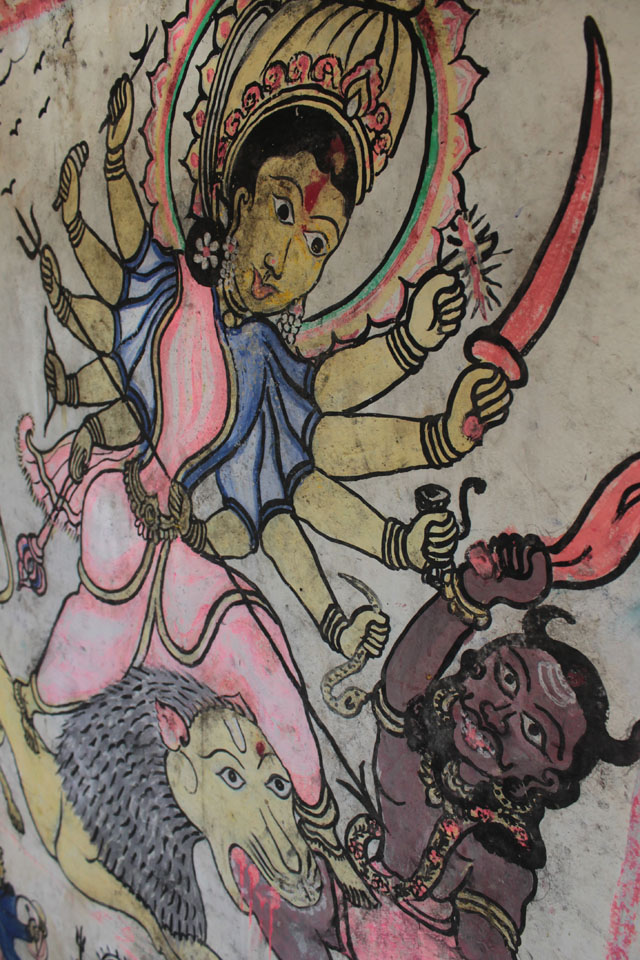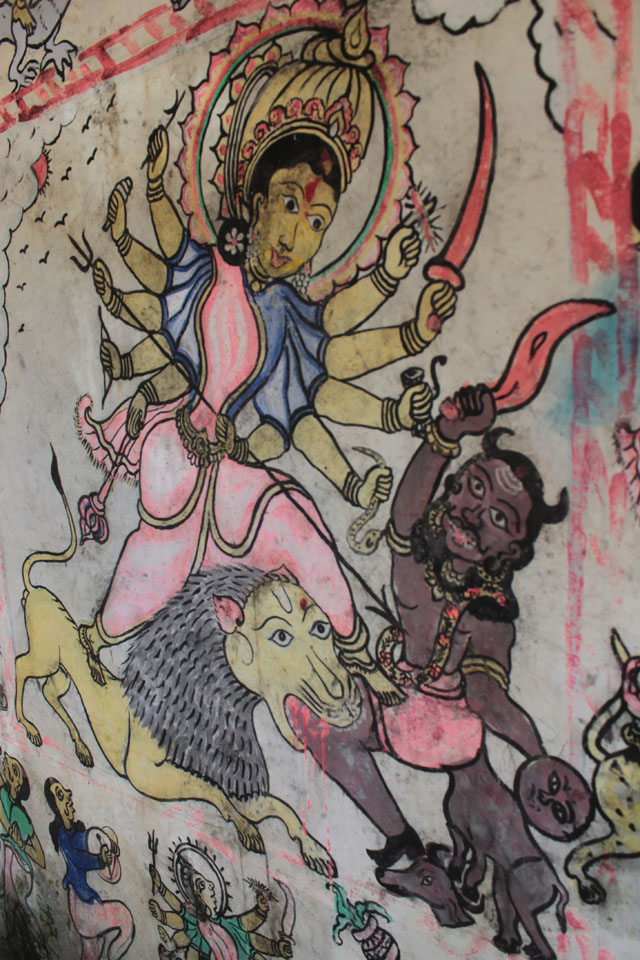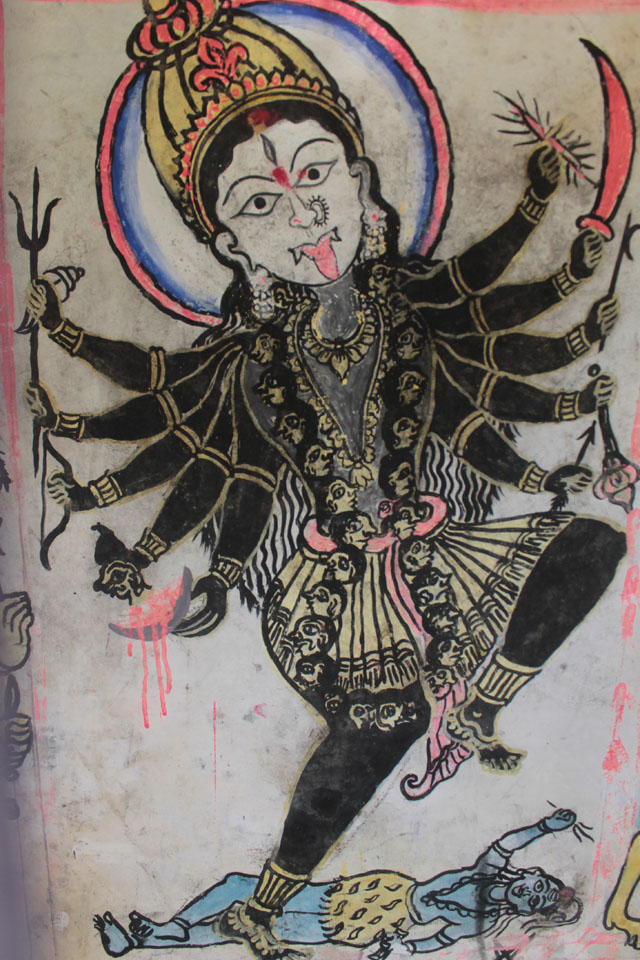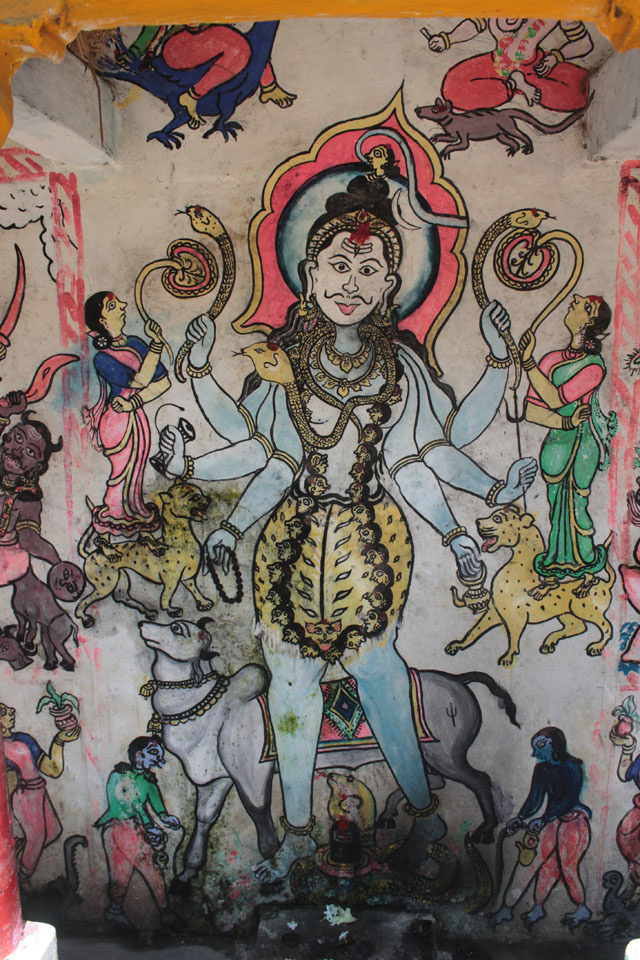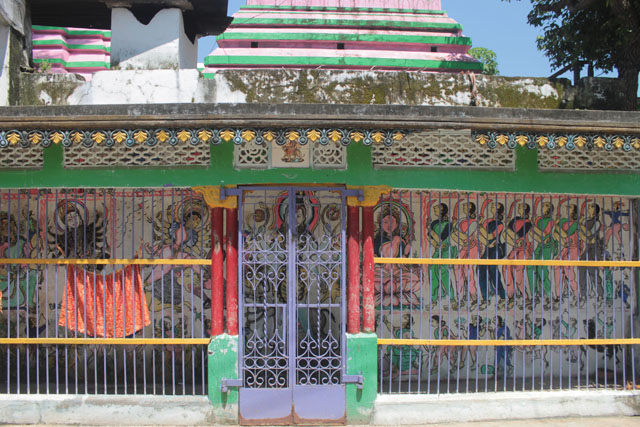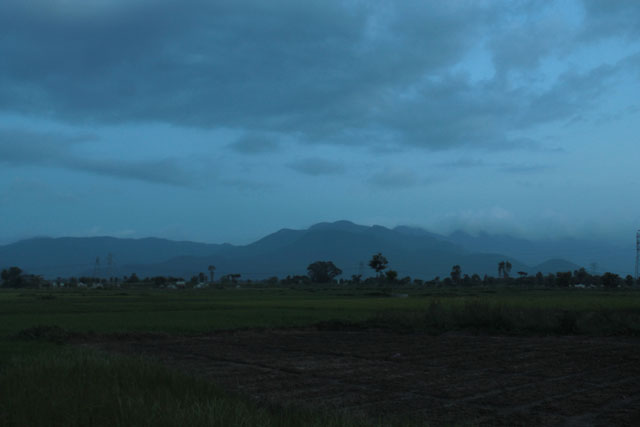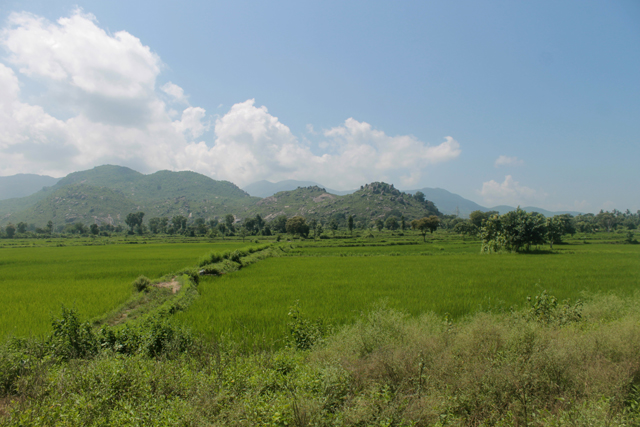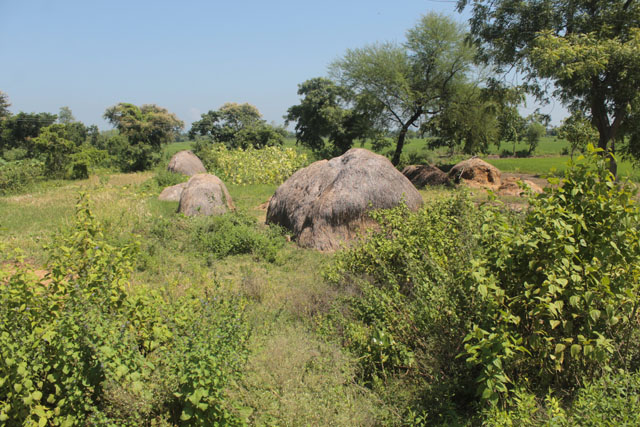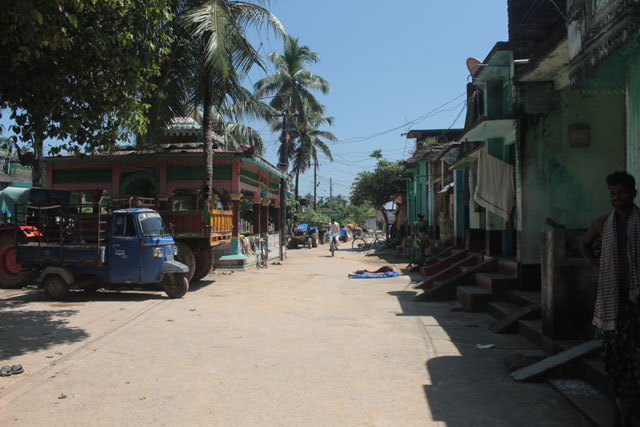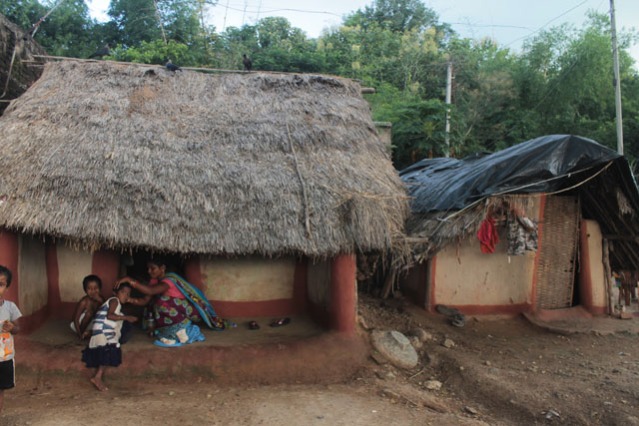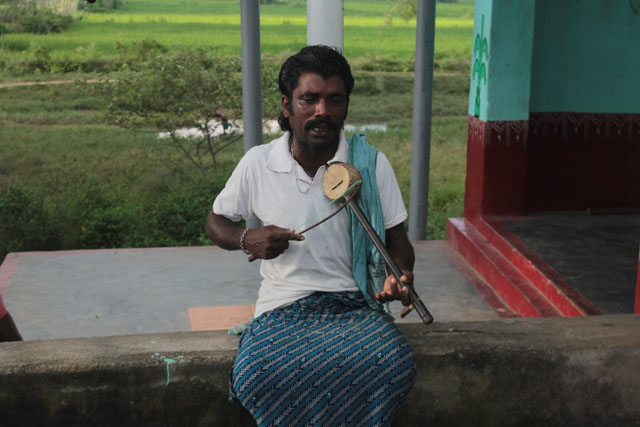A story goes – On the way to heaven, the five Pandava brothers had rested on the veranda of a Brahmin’s house, where no woman was ever blessed with the birth of a child. Arjuna came forward to intervene. He erected a Kothi and a Chammundia (a temporary shelter) with the help of arrows. Through this act, Yama, the God of Death was barricaded out. At night a messenger of Yama appeared but had to leave unsuccessful. Consequently, an agreement was made with Yama – whoever observes Osa will bear sons, and all children will remain alive.
The news spread in no time throughout Avanti. Shriya Chandaluni (a woman sweeper named Shriya) heard it while she was sweeping the street near the palace. One of the queens expressed her displeasure because Shriya to whom she saw first in the morning was untouchable. Equally, Shriya also thought it was inauspicious to have seen the face of the queen because she was antakudi, a barren woman.
The queen wanted to take revenge and reported the matter to the king. The king took away the five sons of Shriya and had them killed in the forest. Shriya went to the forest in search of her sons. Seeing them dead, she cried aloud. At that time Shiva and Parvati were wandering in the wilderness. They heard Shriya’s cry. While comforting her they asked her to observe Osa by erecting a Chammundia, a temporary shelter. She replied that she could only do it when all her sons are alive. Shiva requested her to turn her head away. He sprinkled water on the dead bodies and her sons came back to life. They joined their mother and also started worshipping themselves. The king watched them performing the ritual and when performed Osakothi himself, each of his 99 queens bore sons.



According to yet another story, Kalidasa, the poet had once lived in Bauri Sahi (street of untouchables). There he had started a Kothisala. First, he made the appearance of Shiva Tandav, after that the image of Parvati, then Mahisamardhini Durga and Kali. Mangala followed them, then Ganesha and Kartikeya, and finally Panchu Pandava.

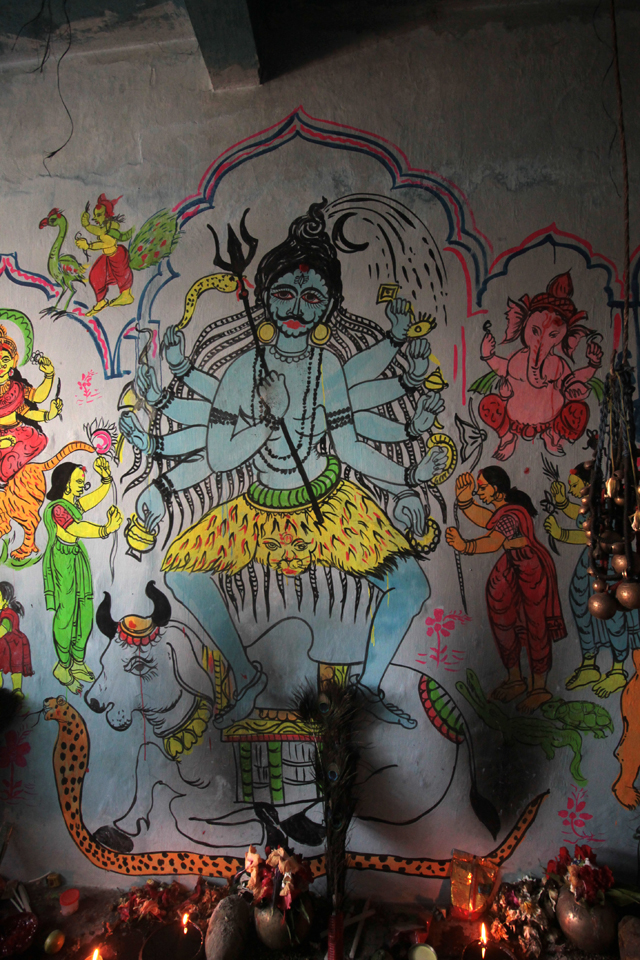
How did Kalidasa go to Bauri Sahi? There was a king, who had addicted to women. Because of this weakness, he could not give time to rule properly. Everyone suffered. Then all his subjects assembled together and proposed him to create a mural of his favourite queen and keep it near him. The king liked the idea and invited the court painter to draw the mural. He got it done. All appreciated the work but Kalidasa said ‘no’. The king sought the answer. In reply, Kalidasa said there was a kalajai, a black mole on the left thigh of the queen, which is not in the figure. The king got annoyed with the answer and started doubting about the secret relationship between Kalidasa and his wife. Immediately he removed the poet. With no other choice, the poet took refuge at Bauri Sahi where he started the Kothisala.
Both stories confirm us that the Osakothi tradition in Ganjam stems from the untouchable groups, the upper caste joining later.



For cultural anthropologists and archaeologists, Osakothi rituals are of great interest as one draws a series of parallels between the evolution of early belief systems against their social and cultural settings and their continuity till modern time. Keeping this in mind recently I had ventured into the heartland of Ganjam around Digapahandi to experience and document the Osakothi rituals.
Also, Read Here:
Travel through Digapahandi – Ganjifa’s Last Bastion
Travel Tips:
Though Osakothi rituals are celebrated in most part of Ganjam we visited villages around Digapahandi and for this story, we had zeroed on Khallingi Village, about 15 km from Digapahandi via Patapur. The ritual is carried out during Durga Puja time every year. You can also visit villages around Dharkote, Purussotampur, Aska and Buguda towns to witness the festival. There is an excellent road network in the district and you will find villagers are very welcoming. However, for a comfortable stay, you can either chose Berhampur, the largest city in the region or Gopalpur-on-Sea. Taptapani Hotspring is the other nearby attraction which is also the gateway to the tribal heartland of Southern Odisha. For food, you have small restaurants on highways and towns.
Osakothi shrines are temporary structures but now have been made permanent. But one should not confuse them with temples. They have strange characters showing a fusion of tribal and folk beliefs. In middle ages, local zamindars and feudal kings appropriated the land and villages of aboriginal chiefs of Kondh and Saura tribes. To hegemonize their subjects, goddesses from tribal realms were accepted as Esta Devis, family goddesses of the royal households. Some of the local Thakuranis acquired great prominence and their shrines were equated with ancient Shakta temples of Hind pantheons.





Osakothi shrines are a link between the tribal deities and beliefs and mainstream Hinduism. The Thakurani (goddess) is represented as a ghata (pot) and depicted in the murals along with various other deities. The season mostly lasts for seven days around Dussehara (from Ashtami to Kumara Purnima). Traditionally an Osakothi shrine is a simple structure, but nowadays because of increased wealth, one finds permanent structures. The basic requirements are a wall for the murals with a vedi platform or a ledge for keeping the ritual objects, a canopy and an open space for the performances and gathering.








The murals of the osakothi shrines are meant to house tetiskoti devatas (thirty-three times of ten million deities). At least 10 to 20 images and a maximum of hundred gods, goddesses, heroes of epics and legends are depicted on walls as attendants of the relatives of the divinities. The murals thus represent a microcosm in a reduced scale. In an Osakothi mural, the entire family of the goddess does appear with sons, daughters and vehicles with a full entourage, regalia and pomp. The Thakurani is then considered to be Adimata, the creation mother. The wall on which murals are drawn is divided into components, symbolizing chambers and houses of various gods and goddesses forming the great family.
Mangala is often depicted in an Osakothi shrine as the dominating deity. She is seen sitting in cross-legged padmasana with four arms, her body is coloured yellow and she wears red or pink sari and a blouse. The goddess carries five pots, one on her head on top of her crown and four in her hands.
Shiva is the only male deity to appear in Osakothi paintings. He even occupies the central position. He is shown as Nataraj. However, Shiva is not invoked in osakothi ritual. There are stories that explain why Shiva is illustrated as a central figure in Osakothi murals. One such story is – there was a widow who would often get possessed by Thakurani. Once Shiva appeared in another form and beat the woman mercilessly saying that the goddess should return to her home and prepare dinner for her family instead of moving around. From then on Shiva is not invoked when the Thakurani appears.
In Osakothi paintings Durga appears with four or more arms, grasping a trident, sword and other weapons in her hands. She is generally represented as a beautiful and forceful woman. In osakothi, Kali is the central figure of the Shakti Cult. She is depicted as a black skinned naked goddess dancing violently on prostrate Shiva. Her powerful many armed images with swinging weapons of all shorts are the most prominent icon in Osakothi murals.
There are also icons of Chinnamasta, Parvati or Gauri, Saraswati, Ganga and Yamuna and a number of Thakurani goddesses such as Khambeswari, Manikeswari, Bankeswari, Tara Tarini, Budhi Thakurani, Bhagawati, Urandawati, Hingula, Chamundi, Maharikala, and so on. There are also minor legendary characters such as Hadi Hadiani, Dhoba Dhobini, Gauda Gaudani, Kandha Kandhuni, Keula Keaulani, Barahalila, Batapanthei, Chhoti Neli and Tapoi.
The Osakothi rituals consist of erecting and painting a shrine (now days erecting is not practised), performing puja, offering prayers, taking out processions, dancing and entertainment. The aim of the ritual is to obtain a boy child. The participants are lower caste inhabitants of a village or local group. Women act as observers. Paintings are drawn by Dandasi Harijan artists. There is a strong belief that if they don’t follow Osakothi rituals, Thakurani may interfere destroying the life and property of people. An interesting story goes: in one of the villages the tradition was stopped for three consecutive years. Thakurani became angry. She said: ‘I will make the village Kala Khamba, black poled (i.e. she will burn houses). I will bring smallpox and phatua, a cow disease’. The Thakurani came to a village and demanded that she performs Osakothi. First, the villagers said: ‘We have no money’. The Thakurani replied: ‘Money is my problem. I shall go with you from village to village to collect money’.












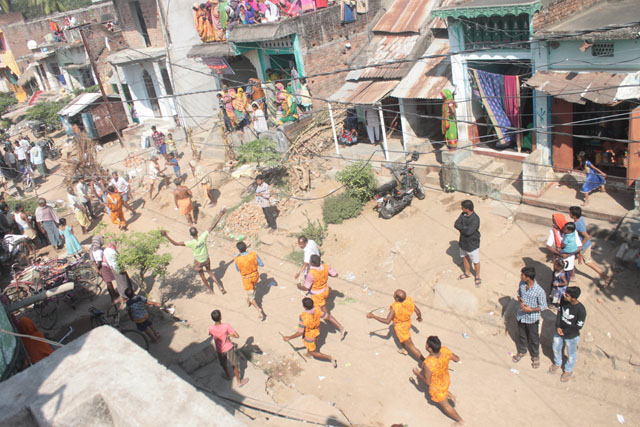

For all 8 nights in a row, the participants in the ritual congregate at the shrine to invoke various gods and goddesses. The ritual begins after the sunset. The Jani (priest) worships the ghata pots representing the goddess Mangala and the image in the murals. He lights a lamp and burns incense after offering ukhuda bhoga (fried parched rice mixed with molasses) to the deities. The dhana koila instrument is then played by the Bayani musician or the singer. The Gayani singer begins the first avahani (invocation song), the audience joins the chorus, called pali. Slowly everyone gets involved. Some of the participants become active personifications of the divine and semi-divine characters and called Devata. One such male Devata may suddenly move forward and backwards and fall in trance called Devata Lagiva. Usually, four or five me men enter into this state simultaneously. The Jani and his companions try to calm the Devata if his movements become too frenzied. They pour water from a lota into his mouth and touch his head with a Mandara (China Rose) flower was taken from Mangala pot.









The ritual ends with Koti Ujeiva on the evening of the Purnima (full moon) or the day following it. The pots are taken to the pond in a procession.












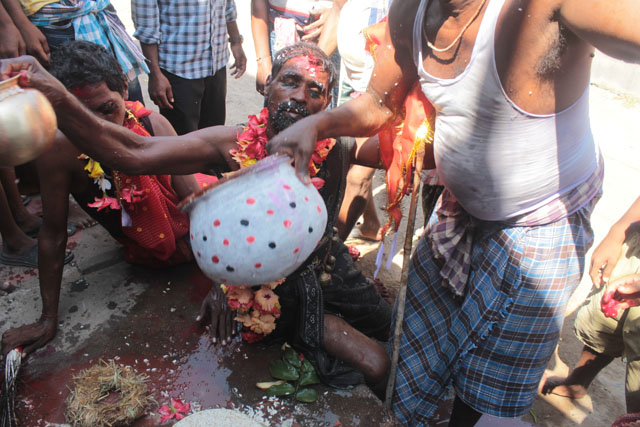

Today, however, Osakothi is in the declining state through the rituals are still on. In our exploration, we were also surprised to see the replacement of murals with flex prints depicting mythological stories in southern style. The beliefs are no more intense as the lower castes are more empowered now. Because of technology and information flow the superstitious beliefs are also fading. It is a million dollar question – for an anthropologist like me it is a loss but one has to accept that we all need to progress and develop scientific tempers and get away from such archaic practices. However, rituals like Osakothi also play as symbols of identity and community bonding at the grassroots of Indian society in the era of market force and globalization.

Author – Jitu Mishra
He can be contacted at jitumisra@gmail.com

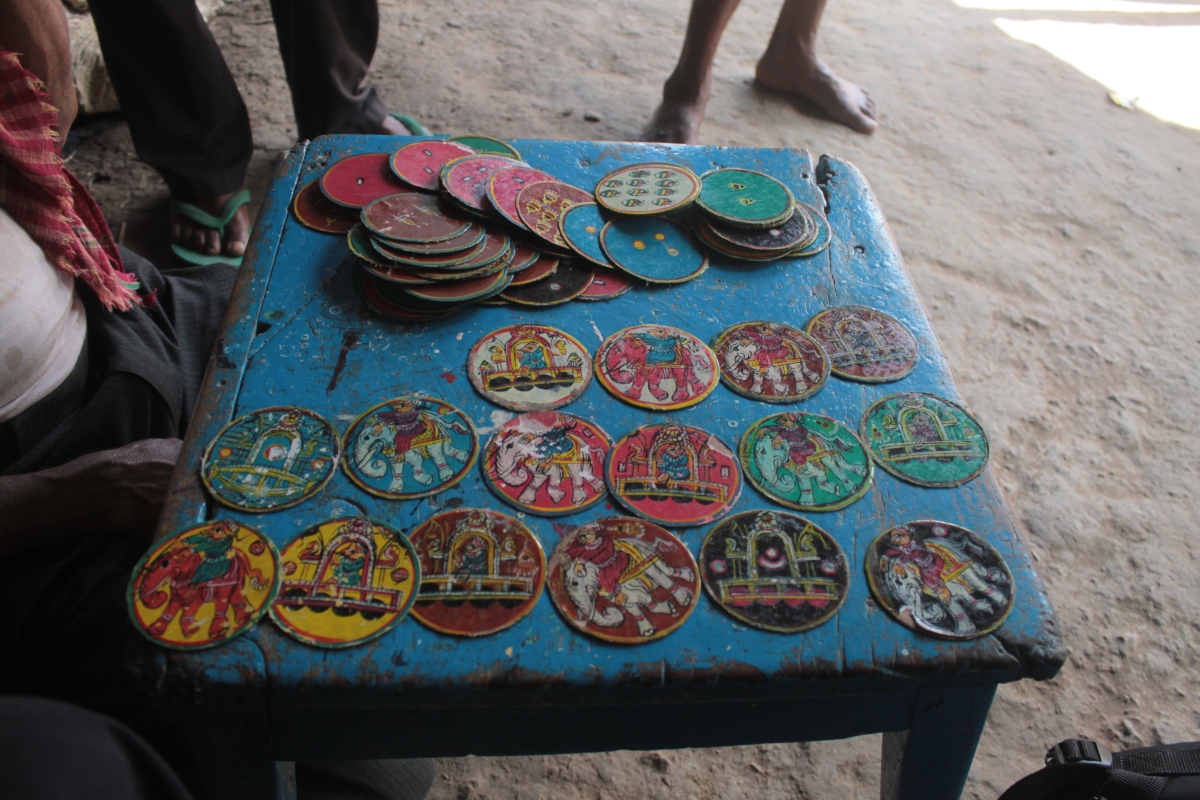
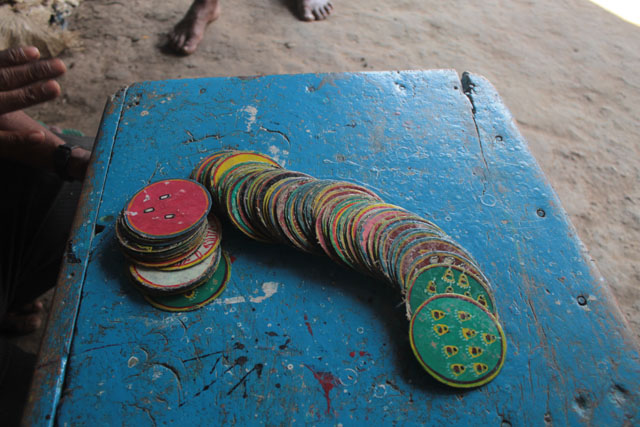


 Sarathi
Sarathi
